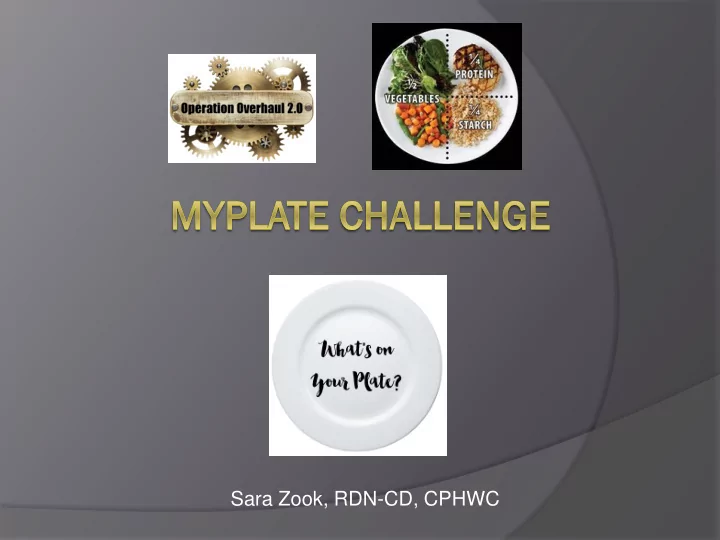

Sara Zook, RDN-CD, CPHWC
Calorie Density Calorie density is a measure of the calorie content of food relative to its weight or volume. It is also called energy density, and is usually measured as calories per 100 grams (3.5 ounces) of food. Choosing foods with a low calorie density can help with weight loss. It makes you automatically eat fewer calories while still eating large and filling portions. A vegetable that contains 30 calories per 100 grams has a low calorie density, while chocolate that contains 550 calories per 100 grams has a very high calorie density.
Calorie Density Apart from healthy high-fat foods, such as nuts or olive oil, most natural foods have a low calorie density. These include: Vegetables: Vegetables have a very low calorie density. Most green vegetables have the lowest out of all foods. This is because they are primarily made up of water, fiber and a very small amount of carbs. Meat and fish: Lean proteins like chicken, white fish and turkey have a low calorie density, yet fattier meats and fish have moderate-to-high calorie density. Fruits: These have a low calorie density because of their high fiber and water content. Berries and other watery fruits tend to have the lowest density. Milk and yogurt: Reduced-fat milk and yogurts with no added sugar also have a low calorie density and provide a good source of protein. Eggs: Whole eggs are a protein-packed superfood with a low calorie density, especially when combined with vegetables into meals such as omelets. Starchy carbs: Some natural starchy carbs like potatoes, legumes and other root vegetables can have a low-to-moderate calorie density. This is especially true once they're cooked, since they fill with water.
Although calorie density may be less well known than other weight management methods (like counting calories) choosing foods based on this measure may actually be simpler and more effective. For example, basing your diet on low-calorie-dense foods tends to reduce your food options in a positive manner because it limits you to predominantly healthy and nutrient-rich whole foods. It can quickly clean up your diet, eliminating most calorie-dense, processed foods that are generally unhealthy and easy to overeat.
Calorie Density Calorie density also has important effects on hunger. Low-calorie-dense foods tend to contain more water and fiber, along with less fat. ○ This is great for making you feel full and reducing daily calorie consumption. In contrast, many high-calorie-dense foods are highly processed and extremely palatable. ○ As you may know, they are very easy to overeat. Research shows that natural, whole foods help signal your brain to stop eating, while this effect is delayed when you eat highly processed foods. In one study, participants ate 56% more calories when provided with a high-energy-dense meal, compared to a low-energy-dense meal.
Calorie Density Comparisons
Label Reading Tool If calories are < grams (of weight) per serving…. ….the food has a low calorie density. Which food is lower in calorie density?
Advantage of Whole Plant Foods Carbohydrate: Calories: Macaroni & Cheese Dinner: Macaroni & Cheese (1 cup) 40 g 390 Salad (2 cups) 13 g 81 Apple sauce (1/2 cup) 22 g 86 Total 75 g 557 Total weight: 22 ounces You Get Stir-fry & Brown Rice Dinner: To Eat Broccoli Stir-fry & MORE! Brown Rice (2 cups) 48 g 259 Salad (2 cups) 13 g 81 Diced Fresh Fruit (1 cup) 13 g 55 Total 74 g 395 Total weight: 27 ounces
MyPlate Quiz Name: _______________________________ 1. What are the main guidelines of MyPlate? a. ½ your “plate” or meal must consist of non -starchy vegetables (potatoes don’t count!) b. ¼ of your “plate” or meal must consist of a protein (meat, fish, eggs, nuts, beans, tofu, etc.) c. ¼ of your “plate” or meal must consist of a grain or starch (rice, pasta, bread, potato, corn, etc.). d. All of the above 2. Pick the food grouping below with the lowest calorie density: a. Chocolate, ground beef and cooking oil b. Non-starchy vegetables, fruits and yogurt c. Pretzels, crackers and cereal 3. “ Calorie density is a measure of the calorie content of food relative to its weight or volume. ” TRUE or FALSE 4. “ If calories are less than grams (of weight) per serving, the food has a low calorie density. ” TRUE or FALSE 1. Why can eating lower calorie density foods help with weight loss? Circle all that apply. a. They contain more fiber and water, which help us feel full b. It can be easier than calorie counting, by focusing on whole foods and less processed foods c. It helps us eat less calories overall, though still filling our plate (visually) to feel that we are eating more
Recommend
More recommend